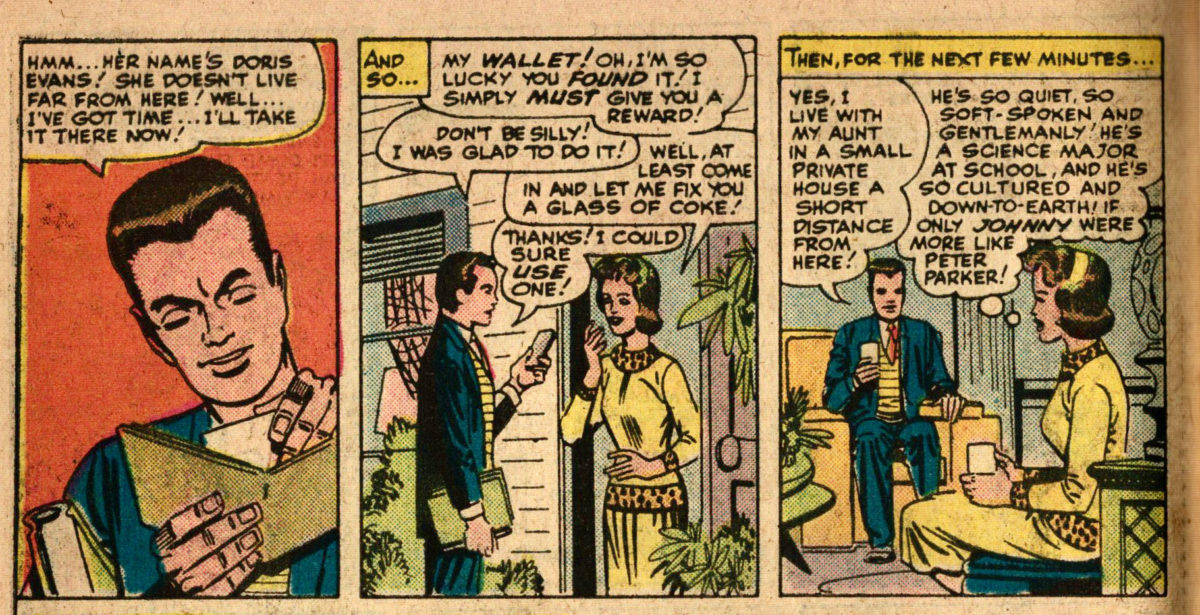Featuring: Captain America
Release: August 15, 1946
Cover: November 1946
10 cents
16 pages

The table of contents for the entire issue credits: Syd Shores as art associate, Stan Lee as editorial and art director, and Al Sulman as editor. Syd Shores also seems to have drawn this story.

It is clear that Syd Shores is no Jack Kirby. Kirby’s direct involvement with drawing the character only lasted about a year. He was then overseeing the creation of the stories by other creators before being drafted into the US Army. It would be more than 20 years before he returned to Captain America. Shady royalties practices on the part of publisher Martin Goodman may have helped keep him away from the company.
It is 1946. World War II is over. What does Captain America do now? Steve Rogers could hang up the stripes for good, but he chooses not to. He and Bucky continue their partnership as crimefighters.





























